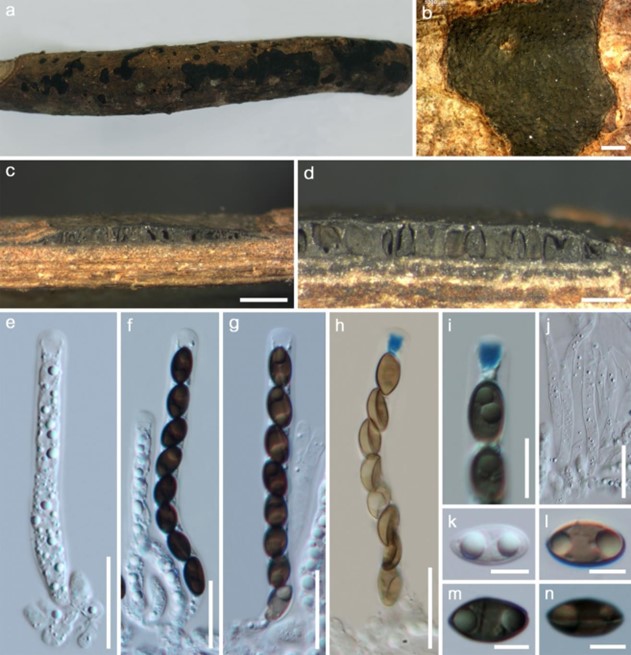Biscogniauxia Kuntze, Revis. gen. pl. (Leipzig) 2: 398 (1891)
MycoBank number: MB 582; Index Fungorum number: IF 582; Facesoffungi number: FoF 02970; 53 morphological species (Species Fungorum 2020), 23 species with sequence data.
Type species – Biscogniauxia nummularia (Bull.) Kuntze
Notes – Biscogniauxia species develop within the bark and emerge via the overlying bark. A periconiella-like asexual morph is associated with several Biscogniauxia species and sometimes vary from nodulisporium-like to periconiella-like (Stadler et al. 2013). The genus appears paraphyletic together with morphologically dissimilar genera, such as Camillea, Obolarina and Graphostoma (Pažoutová et al. 2010, Raimondo et al. 2016, Daranagama et al. 2018). A case could be made to merge all these genera, were it not for the fact that over 90% of the species remain to be studied by multi-gene genealogies and of over 80% only the less relevant rDNA sequences are extant. A new species, Biscogniauxia mangiferae, is illustrated in this entry.

Figure 113 – Biscogniauxia mangiferae (MFLU 18-0827, holotype). a, b Stroma on the host. c, d Cross section of stromata showing the ascoma and ostiole. e-g Asci. h, i J+, apical ring in Melzer’s reagent. j Paraphyses. k-n Ascospores. Scale bars: b, c = 1000 μm, d = 500 μm, e-h = 20 μm, i, j = 10 μm, k-n = 10 μm.
Species
